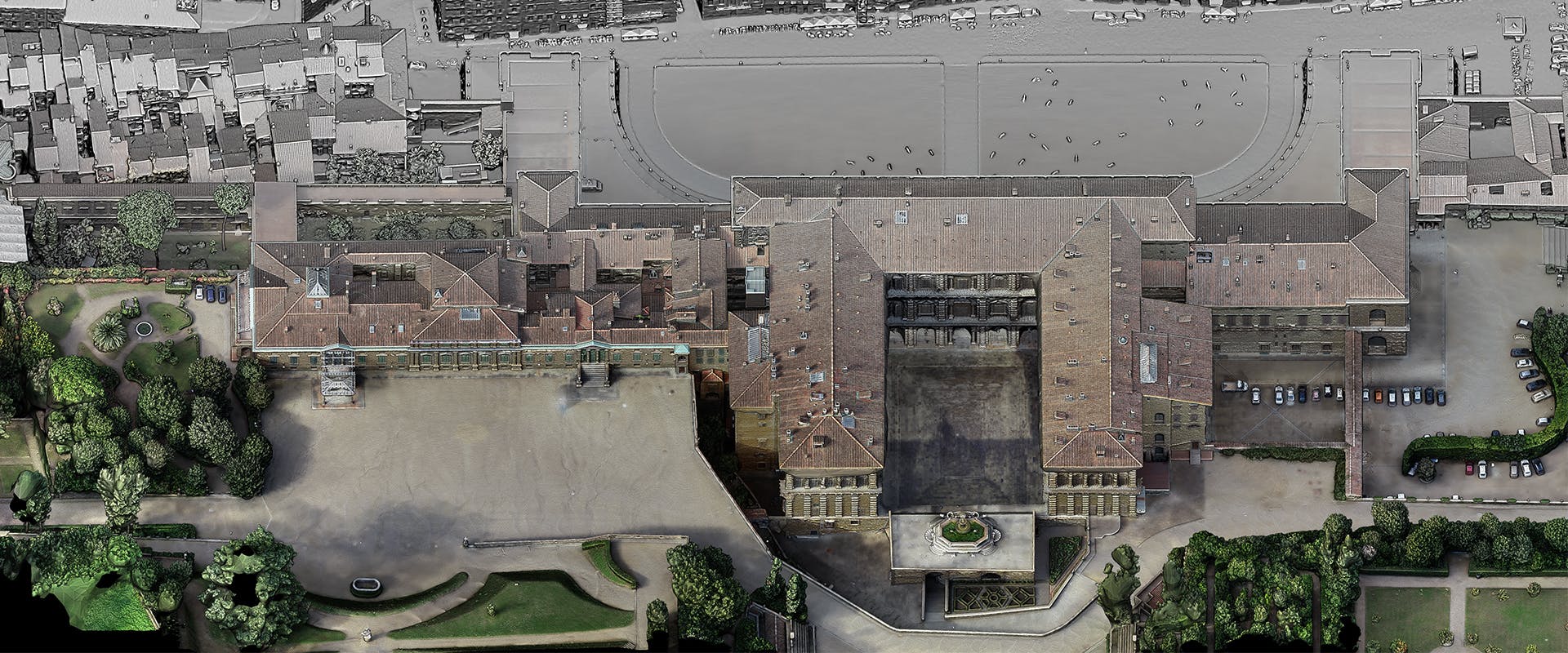A brand new 3D model for Pitti Palace
Technology and conservation for the Royal Palace of Florence
A brand new 3D model for Pitti Palace
After one year and a half, laser scanning, topography and photogrammetry operations, the three-dimensional survey of the Pitti Palace is ready, thanks to the collaboration between the Uffizi Galleries and the Department of Civil and Environmental Engineering of the University of Florence. It is the first digitization in the world for such a vast and complex historical civil building. The results were presented during the study day "Palazzo Pitti and its digital twin: great historic buildings in the era of technological transition", on October the 3th. It was possible for example to recreate digitally the structure of the lost "snail" staircase, originally built in the 16th century by Bartolomeo Ammannati. The comparison of the relief of the staircase built in the 19th century by Pasquale Poccianti with ancient documents, reveals the full extent of the transformations that took place following the demolition of Ammannati's staircase, bringing to light, through the 3D model, rooms whose traces had been totally lost for centuries.
However, the project was not limited to the digital reproduction of the exteriors and architectural structures, but integrally recreated digitally in detail all the interiors of the Medici residence as well, including works, ornaments, furnishings and decorations.
The Pitti Palace has a very complex history: its transformations have been overlaid over time by a multiplicity of activities and uses that were and are constantly evolving. For this reason, the digitization of such a difficult case study, started before the publication of the European Union Recommendation on the subject (which calls for the digitization of all endangered cultural property and 50 percent of the most visited monuments by 2030).
This model will ensure the possibility of producing 3D elaborations for all visualization uses; it will also develop a multi-layered information model, where data, constantly updated in real time, will come in handy for countless purposes of knowledge, conservation, management and enhancement of heritage. The new digital survey of Pitti Palace also lays the groundwork for a sustainable use of the building, in line with the needs dictated by climate change and hydrogeological and natural hazards, which require a new approach to digital documentation, especially in terms of rapid data acquisition, content production methodologies, information sharing and multidisciplinary collaboration.
